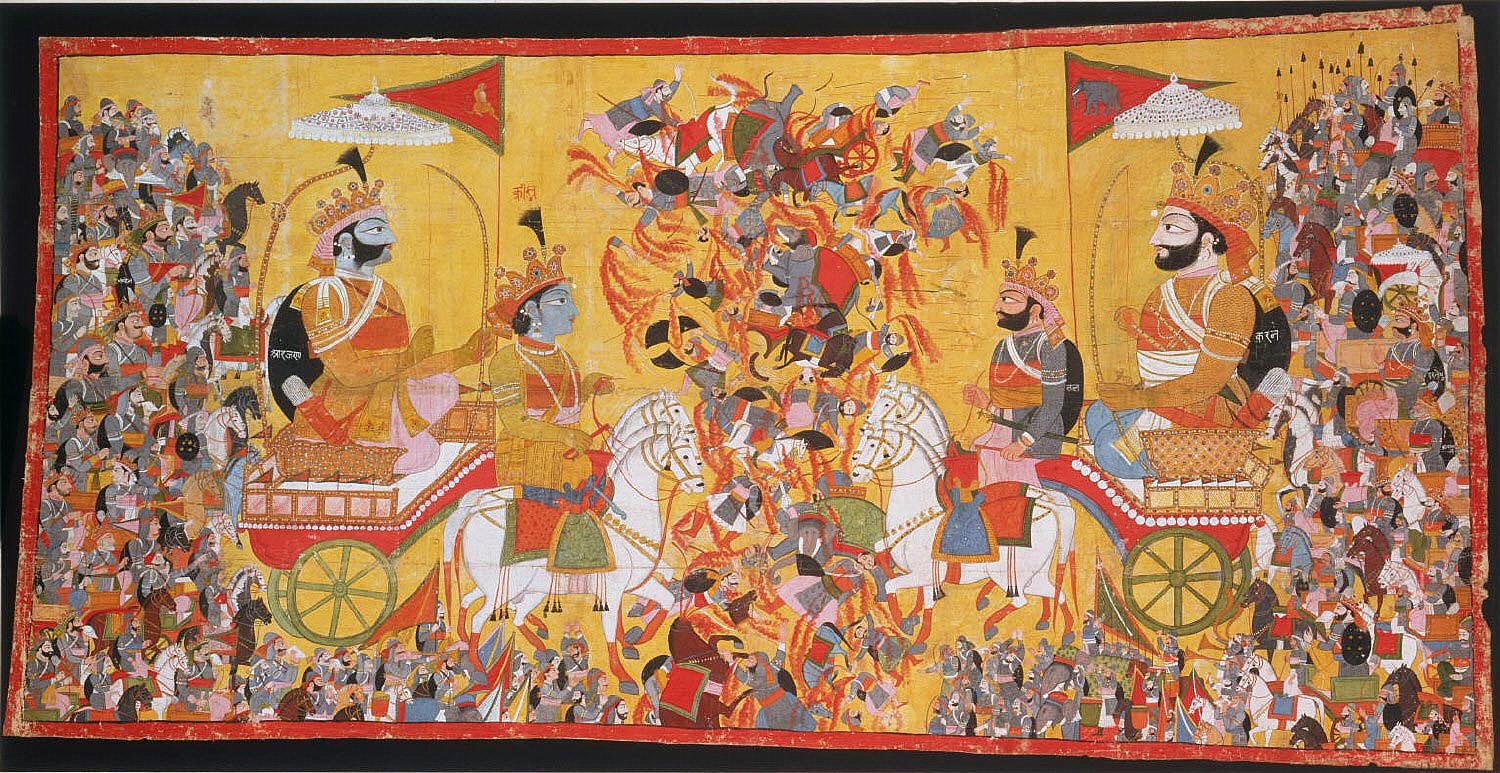[This column will share excerpts from the commentary on Bhagavad Gita by Enlightened Master and rare living incarnation Paramahamsa Nithyananda. The intention is to highlight the eternal relevance of Bhagvad Gita in addressing challenges, issues and dilemmas faced by humanity in present times.]
Bhagavad Gita
Bhagavad Gita is a sacred scripture of the vedic culture. As with all scriptures, it was knowledge that was transmitted verbally. It was called sruti in Sanskrit, meaning something that is heard. It is part of the ancient knowledge base of the vedic tradition, which is the expression of the experiences of the great sages.
Gita, as Bhagvad Gita is generally called, translates literally, from Sanskrit as ‘Sacred Song’. Unlike Vedas and Upanishads, which are standalone expressions, Gita is written into the well known Hindu epic Mahabharata, called a purana or, an ancient happening. It is part of history that was recorded by Vyasa Muni, the great sage and perhaps the greatest writer the world has ever known.
Gita is a direct expression of the Divine. As a consequence of the presence of Gita, the Mahabharata itself is considered a sacred Hindu scripture. Gita arose from the super-consciousness of Krishna, an incarnation of Lord Vishnu, and is therefore considered a scripture.
Paramahamsa Nithyananda
His Holiness Paramahamsa Nithyananda, is a young enlightened yogi and living Incarnation with unimaginable superhuman powers. He is part of a 5000-year-old lineage of enlightened yogic masters who live and train on the sacred mountain of Arunachala in Southern India. Paramahamsa Nithyananda is an adept in the mystical yogic sciences whose fulcrum is the awakening of the mighty Kundalini Shakti, our own highest potential energy.
With a vision to raise the consciousness of our planet, he is working tirelessly to awaken individuals and communities to their highest possibility – a life of completion, power, bliss and Advaita or Oneness. As a Mahamandaleshwar (spiritual head) of the Mahanirvani Peetha, the world’s most ancient apex body of Hinduism, he is rapidly emerging as a powerful voice of Hinduism today and influencing Hindu philosophical thought. Furthermore, He is a spiritual healer, an orator, a prolific author and the spiritual head of an international socio-spiritual organization – Nithyananda Peetham.
The Uncommon
There have been many hundreds of commentaries written on the Bhagavad Gita over the centuries. The earliest of them were by great spiritual masters such as Adi Sankaracharya, Ramanuja, Gyaneshwar and Madhava, thousands of years ago. In recent times, great masters such as Ramakrishna Paramahamsa and Ramana Maharshi have spoken from Gita extensively. Many others have written volumes on this great scripture.
Paramahamsa Nithyananda’s commentary on Bhagavad Gita is not just a literary translation and a simple explanation of that translation. He takes the reader through an expansive journey while talking about each verse. It is believed that each verse of Gita has seven layers of meaning. What is commonly shared is the first level meaning. Here, a rare living incarnation takes us beyond the common to the uncommon, with ease and simplicity.
To read Paramahamsa Nithyananda’s commentary on Gita is to obtain an insight that is rare. It is not mere reading; it is an experience; it is meditation. This is because He is established in the same frequency as Krishna.
Sankara, the great master and philosopher said, “A little reading of Gita, a drop of Ganga water to drink, remembering Krishna once in a while, all this will ensure that you have no problems with Yama (the lord of death)”.
The reading of the commentary is meant to help every individual in daily life as well as in the endeavour to realize the ultimate Truth. It creates the possibility to attain nithyananda, eternal bliss.
Excerpt
Bhagavad Gita: Sastra, Stotra, and Sutra rolled into One
There are millions of scriptures on planet earth. But Bhagavad Gita is incomparable. Unlike any other, this book has penetrated human consciousness so deeply. Bhagavad Gita is the unabridged dictionary and encyclopaedia of spirituality.
Spiritual literature can be classified into three categories:
- Sastras: They give clarity about the goal of human life. They give intellectual understanding about the ultimate truth about man and god. Sastras are like signboards that explain the basics of life.
- Stotras: Stotras means expressing our love or devotion to our master or god. Hinduism does not have idol worship. We worship through the idol; we do not worship the idol itself. In Vaishnavism, there is a beautiful word arca avatara. Arcavatara means the Divine descending on planet earth. Idols are the incarnations of God.
- Sutras: Sutras give us the techniques to reach enlightenment.
Sastras are from the intellectual level. Stotras are from the emotional level. Sutras are from the being level. There are three kinds of human beings; head oriented, heart oriented and being oriented. To fulfil everyone, our enlightened sages have created three kinds of literature – sastras, stotras and sutras. Bhagavad Gita is the only book that is a combination of all three literatures and something more.
Within the vedic literature, our masters have chosen three books and call them ‘prasthanatraya’- the ultimate authorities in spirituality. They are the Brahma Sutra, Upanishads and Bhagavad Gita. Ved Vyasa, an enlightened master, wrote the Brahma Sutra. Many enlightened masters revealed and taught the Upanishads. However, Gita is directly from God, from a purnavatar – a perfect incarnation, Krishna.
Source :
http://lifeblissprograms.org/e-books/flip-books/new-books/BGAbridged/index.html#/20
https://www.youtube.com/user/LifeBlissFoundation/about
Bhagavad Gita Demystified – Page No. 15, 21, 22, 25, 26, 27, 28, 29 – Year of Publication : 2011


0 Comments